Welcome to our free classical music site

Do you write about classical music? Are you a blogger? Want to team up with Classical Connect? Send us a message, let's talk!

Do you write about classical music? Are you a blogger? Want to team up with Classical Connect? Send us a message, let's talk!
September 29, 2014. Recent birthdays. With a lull this week (with one exception: Paul Dukas, of the Sorcerer’s Apprentice fame, was born on October 1st, 1865) we want to go back to some of the anniversaries we failed to properly acknowledge. Among the composers born in September that we mentioned in passing (and there were many), were two whom we’ve never written about before: Johann Christian Bach and William Boyce, both very important composers of the 18th century and both quickly forgotten soon after their death, only to regain popularity later.
Johann Christian Bach, Johann Sebastian’s youngest son, is often called "the London Bach" as he spent the last 20 years of his life in that city. He was born in Leipzig on September 5th, 1735 when his father was already 50. It seems he was Johann Sebastian’s favorite child, as his father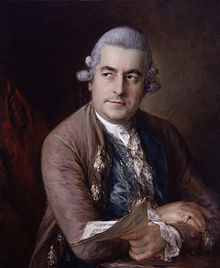 left him three of his harpsichords. After Johann Sebastian’s death in 1750 Christian moved to Berlin and continued musical lessons with his older half-brother, Carl Philipp Emanuel. In 1755 Christian left Germany – the first Bach to do so in two centuries – and settled in Milan. He composed and earned his living as the second organist at the Milan Cathedral. His early success came with the opera Catone in Utica, which was staged in many cities around Italy. The King’s Theater, the most important opera company in England, took notice, commissioning two operas, and in 1762 Christian moved to London. He soon became the most important composer in the city, accepted by the royal family, with patrons among the aristocracy and friends like Gainsborough and other painters and artists. He wrote variations on God Save the King into the sixth of his keyboard concertos Op. 1, and it became exceedingly popular. Bach and Carl Friedrich Abel, a composer and viol player, organized a series of concerts, an important milestone in London’s music life. In 1764 Leopold Mozart arrived in London with his eight year-old musical prodigy of a son. Young Wolfgang held Johann Christian’s music in highest regard; later he would rework three of his piano sonatas into concertos (here is the original Sonata Op.5 no. 2 performed by the Austrian pianist Hans Kann, and here’s the 15 year-old Mozart’ concerto K. 107 no. 1; Ton Koopman performs with the Amsterdam Baroque Orchestra). In London they even played harpsichord duets together. Christian’s symphonic music also influencedMozart’s early work. We’ll write more about Johann Christian some other time, his keyboard concertos and especially his very popular operas. In the mean time, here is his Sinfonia in D major, Op. 18, No. 4; Hanspeter Gmur leads the Failoni Orchestra of Budapest.
left him three of his harpsichords. After Johann Sebastian’s death in 1750 Christian moved to Berlin and continued musical lessons with his older half-brother, Carl Philipp Emanuel. In 1755 Christian left Germany – the first Bach to do so in two centuries – and settled in Milan. He composed and earned his living as the second organist at the Milan Cathedral. His early success came with the opera Catone in Utica, which was staged in many cities around Italy. The King’s Theater, the most important opera company in England, took notice, commissioning two operas, and in 1762 Christian moved to London. He soon became the most important composer in the city, accepted by the royal family, with patrons among the aristocracy and friends like Gainsborough and other painters and artists. He wrote variations on God Save the King into the sixth of his keyboard concertos Op. 1, and it became exceedingly popular. Bach and Carl Friedrich Abel, a composer and viol player, organized a series of concerts, an important milestone in London’s music life. In 1764 Leopold Mozart arrived in London with his eight year-old musical prodigy of a son. Young Wolfgang held Johann Christian’s music in highest regard; later he would rework three of his piano sonatas into concertos (here is the original Sonata Op.5 no. 2 performed by the Austrian pianist Hans Kann, and here’s the 15 year-old Mozart’ concerto K. 107 no. 1; Ton Koopman performs with the Amsterdam Baroque Orchestra). In London they even played harpsichord duets together. Christian’s symphonic music also influencedMozart’s early work. We’ll write more about Johann Christian some other time, his keyboard concertos and especially his very popular operas. In the mean time, here is his Sinfonia in D major, Op. 18, No. 4; Hanspeter Gmur leads the Failoni Orchestra of Budapest.
The fine portrait of Johann Christian, above, was painted by Thomas Gainsborough in 1776.Permalink
September 22, 2014. Panufnik, Shostakovich and Rameau. The Polish composer Andrzej Panufnik was born 100 years ago, on September 24th of 1914 in Warsaw. His mother was a violinist, his father – a famous violin-maker. As a young boy Andrzej showed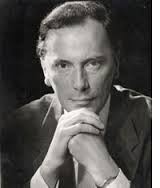 interest in music but his father didn’t approve, so even though he took piano lessons, the studies were erratic. He never learned to play piano well enough and in order to enter the Warsaw Conservatory had to join the department of percussion instruments. He soon dropped the percussions and switched to conducting and composition. His first known work (a trio) dates from 1934. After graduating, he spent some time studying in Vienna, and then went to Paris. In both cities he heard a lot of new music, from Schoenberg to Berg to Bartók. Panufnik returned to Warsaw shortly before the start of the Second World War. Throughout the war he stayed in the city, like his good friend Witold Lutoslawski; to earn some extra money they played piano duos in cafés. After the war Panufnik picked up several conducting positions and soon became highly respected in this field. He also continued composing, and several of his compositions received national recognition and prizes. But things were changing in the now Stalinist Poland. Like so many composers of the eastern block, he was compelled to write “socialist-realist” music, while some of his serious compositions were severely criticized. Still, as a composer of note, he maintained a relatively privileged position, which allowed him to travel abroad to conduct. During one of these trips, while in Zurich in 1954, he escaped to the West. Both his name and his music were immediately banned in Poland, disappearing as if they never existed. He settled in England where life turned out to be rather difficult: after the initial attention his defection had received he was all but forgotten. To earn money he turned to conducting again; in 1957 he was appointed music director of the City of Birmingham Symphony Orchestra. He held this post for two years but then quit to continue composing full time. His work was occasionally performed in England and the US, but the big break happened in 1963 when his Sinfonia Sacra won the Prince Rainier Competition. Commissions and recordings followed: Leopold Stokowski, himself of Polish descent and a Panufnik champion of many years, recorded his Universal Prayer; Jascha Horenstein also recorded several pieces. Yehudi Menuhin commissioned him a violin concerto and Seiji Ozawa did the same for the Boston Symphony Orchestra. As Panufnik’s fame grew and the regime in Poland got milder, his name was resurrected in his native country. Some of his compositions returned to the concert stage but Panifnik waited for another 13 years, till after the first democratic government had been elected, before visiting Poland. That was in 1990 and Panufnik had just one year to live. He was productive till the end, performing the premier of his Symphony no. 10 in Chicago that same year and completing the Cello concerto, which he wrote for Mstislav Rostropovich, shortly before his death.
interest in music but his father didn’t approve, so even though he took piano lessons, the studies were erratic. He never learned to play piano well enough and in order to enter the Warsaw Conservatory had to join the department of percussion instruments. He soon dropped the percussions and switched to conducting and composition. His first known work (a trio) dates from 1934. After graduating, he spent some time studying in Vienna, and then went to Paris. In both cities he heard a lot of new music, from Schoenberg to Berg to Bartók. Panufnik returned to Warsaw shortly before the start of the Second World War. Throughout the war he stayed in the city, like his good friend Witold Lutoslawski; to earn some extra money they played piano duos in cafés. After the war Panufnik picked up several conducting positions and soon became highly respected in this field. He also continued composing, and several of his compositions received national recognition and prizes. But things were changing in the now Stalinist Poland. Like so many composers of the eastern block, he was compelled to write “socialist-realist” music, while some of his serious compositions were severely criticized. Still, as a composer of note, he maintained a relatively privileged position, which allowed him to travel abroad to conduct. During one of these trips, while in Zurich in 1954, he escaped to the West. Both his name and his music were immediately banned in Poland, disappearing as if they never existed. He settled in England where life turned out to be rather difficult: after the initial attention his defection had received he was all but forgotten. To earn money he turned to conducting again; in 1957 he was appointed music director of the City of Birmingham Symphony Orchestra. He held this post for two years but then quit to continue composing full time. His work was occasionally performed in England and the US, but the big break happened in 1963 when his Sinfonia Sacra won the Prince Rainier Competition. Commissions and recordings followed: Leopold Stokowski, himself of Polish descent and a Panufnik champion of many years, recorded his Universal Prayer; Jascha Horenstein also recorded several pieces. Yehudi Menuhin commissioned him a violin concerto and Seiji Ozawa did the same for the Boston Symphony Orchestra. As Panufnik’s fame grew and the regime in Poland got milder, his name was resurrected in his native country. Some of his compositions returned to the concert stage but Panifnik waited for another 13 years, till after the first democratic government had been elected, before visiting Poland. That was in 1990 and Panufnik had just one year to live. He was productive till the end, performing the premier of his Symphony no. 10 in Chicago that same year and completing the Cello concerto, which he wrote for Mstislav Rostropovich, shortly before his death.
We’ll hear two compositions by Panufnik: first the Nocturne, an early work from 1947 (here, performed by the Louisville Orchestra, Robert Whitney conducting), and Autumn Music, from 1962 (Jascha Horenstein leads the London Philharmonic Orchestra, here).
Another eminent composer of the 20th century, Dmitry Shostakovich, was born on September 25th of 1906. Shostakovich and Panufnik knew each other well: they met during Panufnik’s trips to Russia. And as different as their music is, their lives had many things in common: sporadic political prosecution, banned music, pressure to write in the “patriotic,” “socialist-realism” mode, unfortunate compromises they were forced into. Panufnik managed to escape, the more timid Shostakovich would’ve never even dreamed of it.
Also on September 25th but almost two and a half centuries earlier, in 1683, one of the greatest composer of the French Baroque was born, Jean-Philippe Rameau.Permalink
September 15, 2014. Brahms, 6 Klavierstücke, op. 118. We continue our traversal of the late piano works of Johannes Brahms. Three weeks ago Joseph DuBose wrote about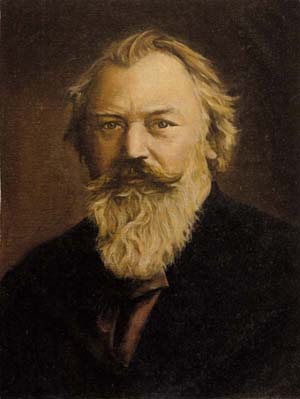 7 Fantasien, op. 116, composed in 1892. This time he discusses Six Pieces for Piano (Klavierstücke) op. 118, written by Brahms one year later, in 1893. This was not an easy time in Brahms’s life: though just 60 years old and in a good health, Brahms was already thinking of abandoning composition. Many of his closest friends have died: Elisabet von Herzogenberg, the former pupil, a love interest and the wife of a friend; the singer Hermine Spies; Philipp Spitta, the biographer of Johann Sebastian Bach; and Hans von Bülow, the pianist and conductor. Still, Brahms remained creative, and even though he stopped writing in the large form, his chamber output was as rich as ever.
7 Fantasien, op. 116, composed in 1892. This time he discusses Six Pieces for Piano (Klavierstücke) op. 118, written by Brahms one year later, in 1893. This was not an easy time in Brahms’s life: though just 60 years old and in a good health, Brahms was already thinking of abandoning composition. Many of his closest friends have died: Elisabet von Herzogenberg, the former pupil, a love interest and the wife of a friend; the singer Hermine Spies; Philipp Spitta, the biographer of Johann Sebastian Bach; and Hans von Bülow, the pianist and conductor. Still, Brahms remained creative, and even though he stopped writing in the large form, his chamber output was as rich as ever.
We illustrate each of the six pieces with a recording made by Beatrice Berrut. Briefly about Beatrice: she was born in the canton of Valais, Switzerland, studied at the Lausanne Conservatory and later at the Hochschule für Musik Hanns Eisler in Berlin. Currently she is studying with John O'Conor at the Royal Irish Academy of Music. A winner of several international piano competitions, she performed in major concerts hall of Europe. In 2011 she recorded all of Robert Schumann’s piano sonatas: Op.11 in F-sharp minor, Op.22 in G minor and the rarely performed Op.14 in F minor. The recordings of Brahms’s Klavierstücke op. 118 were made in 2009. Here’s the article.
Permalink
September 8, 2014. A remarkable week. Almost every year the second week of September brings an exceptionally large number of anniversaries: depending on the year, eight or nine birthdays of eminent composers fall within these seven days. This year the composers are: Antonin Dvořák, born on this, September 8th, in 1841, Henry Purcell – on September 10th of 1659; then the following day, the 11th of September, is the birthday of William Boyce, one of the most important English composers of the 18th century. On the same day, but almost three centuries later, in 1935, the wonderful Estonian composer Arvo Pärt was born. And that’s not all –September 13th is the birth date of three composers: Girolamo Frescobaldi in 1583, Clara Schumann in 1819, and Arnold Schoenberg in 1874. Michael Haydn, the younger brother of Joseph and an excellent composer in his own right, was born on September 14th of 1737, and finally Luigi Cherubini was also born on September 14th, in 1760. In the past we’ve written about some about these composers, this week we’ll turn to an Italian, Girolamo Frescobaldi.
Frescobaldi was the first European composer to write mostly for a keyboard instrument; practically all music written by his great predecessors such as Orlando di Lasso and Claudio Monteverdi, was vocal and instrumental. His organ music influenced generations of composers, including Johann Sebastian Bach. One of Frescobaldi’s most important compositions was a 1635 collection of several Masses and other liturgical music called Fiori Musicali (Musical flowers). Parts of the Fiori were included in the famous book by Johann Joseph Fux called Gradus ad parnassum, a treatise on counterpoint written in 1725 but used as a textbook till the late 19th century (Mozart, Haydn and Beethoven all used it in their studies). Bach copied the text of Fiori with his own hand. The three masses of the Fiori are: Missa della Domenica, Missa degli Apostoli, and Missa della Madonna. We’ll hear the first one, Missa della Domenica in the performance by the organist Roberto Loreggian. You’ll also hear the choir of Schola Gregoriana Scriptoria directed by Nicola M. Bellinazzo.Permalink
September 1, 2014. Pachelbel, Bruckner and more. Had he been alive, Johann Pachelbel would probably be very upset with the enormous popularity of his Cannon in D. A prolific composer, he wrote a large body of music, both secular and sacred, which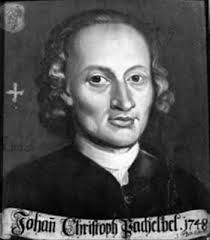 these days is completely overshadowed by this one piece. During his lifetime, though, Pachelbel was famous as a composer but also as an organist and music teacher. He was born on September 1st of 1653 in Nuremberg, Bavaria. From a young age he studied music with different local organists, and then attended the famous University of Altdorf (Leibniz studied there). At the age of 16 he was made an organist in the St. Lorenz church. In 1673 he went to Vienna and was appointed a deputy organist at the St-Stephen’s Cathedral, the main church of Austria. He stayed in Vienna for the next five formative years, during which he met with many leading composers and musicians. In 1677 he moved to Eisenach (Johann Sebastian Bach would be born there eight years later) as a court organist to the Duke of Saxe-Eisenach. While there he became a good friend of Johann Sebastian’s father, Johann Ambrosius. Pachelbel’s story is intertwined with that of the Bach family: in 1678 Pachelbel moved to Erfurt were many of the Bachs lived; he became a godfather to one of Johann Sebastian’s sisters, lived in the house of another member of the Bach family and taught music to Johann Christoph, J.S’s oldest brother. Pachelbel stayed in Erfurt till 1690 and then left seeking better employment. In 1694, during the wedding celebration of his former pupil, Johann Christoph Bach, he met, for the only time, the nine-year-old Johann Sebastian. For a while Pachelbel moved from one city to another and 1695 returned to his native Nuremberg, as a famous composer invited by the city council. He lived in Nuremberg for the rest of his life; Pachelbel died on March 3rd of 1706. In 1699, in Nuremberg, he composed one of his most important pieces, Hexachordum Apollinis ("Six Strings of Apollo"), a set of six arias followed by variations, which, according to Pachelbel himself, could be performed either on the organ or the harpsichord. Variations were a somewhat new musical form in the 17th century, and Hexachordum was by far the most interesting set of variations written to date. Pachelbel dedicated the work to the German-Danish composer Dieterich Buxtehude who hugely influenced the young Johann Sebastian Bach. We’ll hear the organ version of the first Aria, Aria Prima, followed by six variations. The organist is John Butt.
these days is completely overshadowed by this one piece. During his lifetime, though, Pachelbel was famous as a composer but also as an organist and music teacher. He was born on September 1st of 1653 in Nuremberg, Bavaria. From a young age he studied music with different local organists, and then attended the famous University of Altdorf (Leibniz studied there). At the age of 16 he was made an organist in the St. Lorenz church. In 1673 he went to Vienna and was appointed a deputy organist at the St-Stephen’s Cathedral, the main church of Austria. He stayed in Vienna for the next five formative years, during which he met with many leading composers and musicians. In 1677 he moved to Eisenach (Johann Sebastian Bach would be born there eight years later) as a court organist to the Duke of Saxe-Eisenach. While there he became a good friend of Johann Sebastian’s father, Johann Ambrosius. Pachelbel’s story is intertwined with that of the Bach family: in 1678 Pachelbel moved to Erfurt were many of the Bachs lived; he became a godfather to one of Johann Sebastian’s sisters, lived in the house of another member of the Bach family and taught music to Johann Christoph, J.S’s oldest brother. Pachelbel stayed in Erfurt till 1690 and then left seeking better employment. In 1694, during the wedding celebration of his former pupil, Johann Christoph Bach, he met, for the only time, the nine-year-old Johann Sebastian. For a while Pachelbel moved from one city to another and 1695 returned to his native Nuremberg, as a famous composer invited by the city council. He lived in Nuremberg for the rest of his life; Pachelbel died on March 3rd of 1706. In 1699, in Nuremberg, he composed one of his most important pieces, Hexachordum Apollinis ("Six Strings of Apollo"), a set of six arias followed by variations, which, according to Pachelbel himself, could be performed either on the organ or the harpsichord. Variations were a somewhat new musical form in the 17th century, and Hexachordum was by far the most interesting set of variations written to date. Pachelbel dedicated the work to the German-Danish composer Dieterich Buxtehude who hugely influenced the young Johann Sebastian Bach. We’ll hear the organ version of the first Aria, Aria Prima, followed by six variations. The organist is John Butt.
Anton Bruckner was born on September 4th of 1824. Last year we wrote about his Symphony no. 5; this year we’ll go back several years, to Bruckner’s Symphony no. 1. This symphony was the first one deemed by Bruckner to be good enough to be published: he wrote a Study Symphony in F minor before that, but didn’t like it. The symphony was written between January of 1865 and April of 1866, so Bruckner was already 41 when its first version was completed. At the time he was living in Linz and working as the organist at Stadtpfarrkirchen, the parish church of the Assumption. During that time Bruckner, already a composer of some renown, undertook very unusual studies with Simon Sechter, a Viennese specialist in music theory, to better learn the counterpoint. Most of the teaching was done by correspondence, plus Bruckner’s infrequent visits to Vienna. The very first version of the symphony was performed in 1868, with Bruckner conducting. Bruckner famously lacked any confidence in his talent and was susceptible to opinions of critics and even students. That led to numerous revisions of his works. The First symphony was no exception. In 1877 and then in 1884 he created what is called the Linz Version (even though by that time Bruckner was already residing in Vienna). He returned to the work in 1891 (the so-called "Vienna version") and then again in 1893. We’ll hear the "Linz version," the one that is recorded most often. The conductor is Bernard Haitink, with the Bavarian Radio Symphony Orchestra. This live 1974 recording runs about 45 minutes.
Three more very talented composers were born this week: Pietro Locatelli on September 3rd of 1695, Darius Milhaud on September 4th of 1892, and Johann Christian Bach (the “London Bach”) – on September 5th of 1735. We’ll have to write about them another time.Permalink
August 25, 2014. Johannes Brahms, 7 Fantasien, op. 116. This set of miniatures, sometimes called Seven Fantasies, was written by Brahms in 1892. Popular both with the listeners and performers, it is represented in our library with the recordings made by the young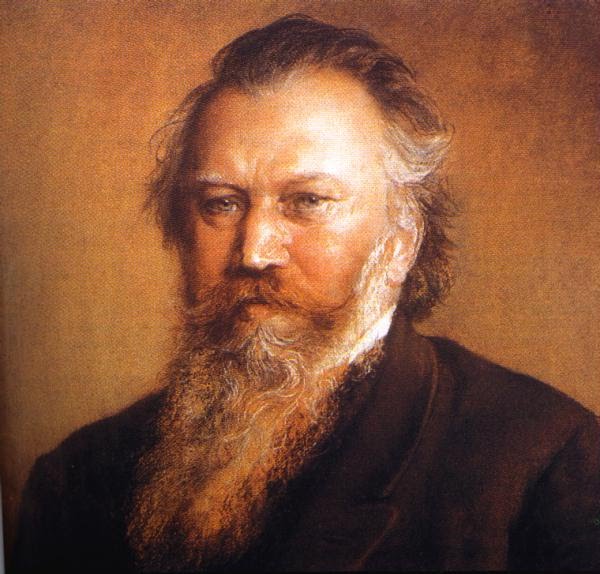 English pianists Sam Armstrong and Ashley Wass; Israel-born Benjamin Hochman and Rafael Skorka; the Russian pianist Yury Shadrin; and the Americans Christopher Atzinger and David Kaplan. Joseph DuBose takes an in-depth look into this piano masterpiece by the German composer. Read the complete article and listen to the Fantasies here.
English pianists Sam Armstrong and Ashley Wass; Israel-born Benjamin Hochman and Rafael Skorka; the Russian pianist Yury Shadrin; and the Americans Christopher Atzinger and David Kaplan. Joseph DuBose takes an in-depth look into this piano masterpiece by the German composer. Read the complete article and listen to the Fantasies here.
One of the several offspring of the Romantic period, and developing nearly contemporaneously with the German Lied, the piano miniature opened to composers a world as vastly rich and imaginative as the larger forms handed down from the Classical masters – indeed, perhaps even more so. With the nocturnes of John Field among its earliest examples, the piano miniature was further developed by the same hands that brought the German Lied into maturity – Franz Schubert and Robert Schumann – as well as in the many "dances" of Frédéric Chopin. Like the Lied, the miniature was given a deeply philosophical expression, and rendered with such remarkable introspection and calculated effect, by Johannes Brahms.
Though Brahms was widely considered the immediate heir of Beethoven and Schumann, in opposition to the New German School of Liszt and Wagner, it is his several collections of miniatures rather than his sonatas that are perhaps the most brilliant gems of his output as a composer of piano music. Somewhat curiously, Brahms composed his only three piano sonatas, a form which, like the symphony, was a staple of the Classical composer, very early in his career. From thence he conquered the challenges of the large-scale variation set during the middle of his career. His earliest efforts in the realm of the miniature followed quickly on the heels of the completion of the third and last piano sonata with the composition of the opus 10 Ballades during the summer of 1854. However, twenty-five years would pass before Brahms once again composed a set of miniatures. In 1879-80, two important sets appeared: the eight Klavierstücke, op. 76 (played here by Sam Armstrong) and the two Rhapsodies, op. 79 (no. 1 and no. 2, played by Michael Krücker and Dmitry Paperno, respectively). Most notable is the Klavierstücke, which built upon the basic groundwork laid by the Ballades, and further set the stage for Brahms’s final essays in the genre, as well as his last works for the piano.
During the early 1890s, Brahms compiled together the twenty pieces that were published during 1892-93 as the opp. 116-19. It is acknowledged that he composed more than the twenty pieces known to us today, and it is possible that some were drafted earlier. However, it is generally accepted that most of the pieces were composed roughly close to their dates of publication. As a whole, these pieces display Brahms as intensely meditative; combined with opus 76, they are a gradual progression away and an ultimate departure from the extroverted Sturm und Drangstyle of his more youthful years; taken as a part of his entire output for the piano, they are an immensely rich and imaginative culmination, and quite easily some of the most beautiful music composed for the instrument.
Of these four later sets, opus 116 is unique among its companions. [continued]Permalink